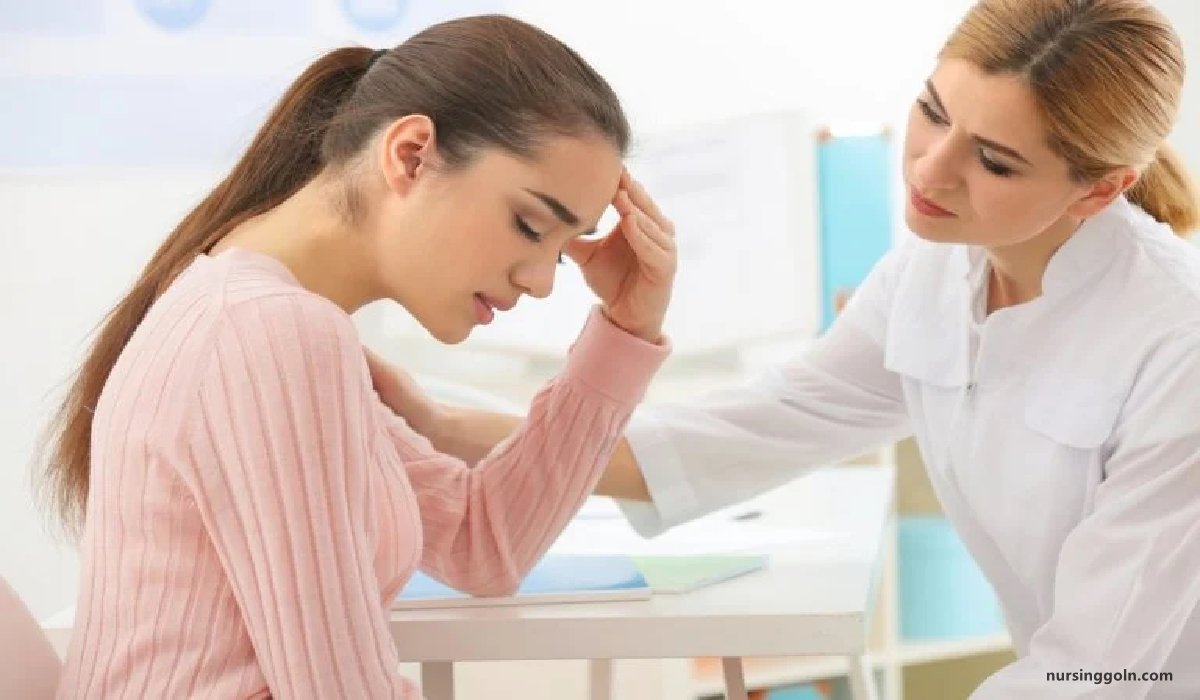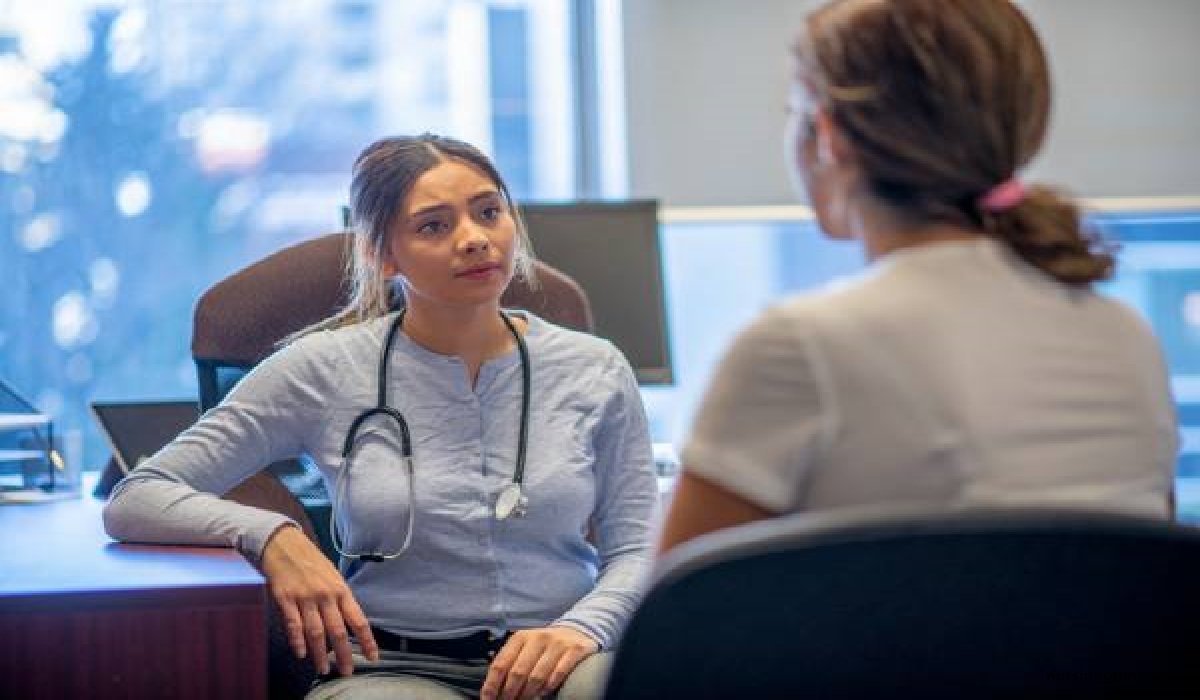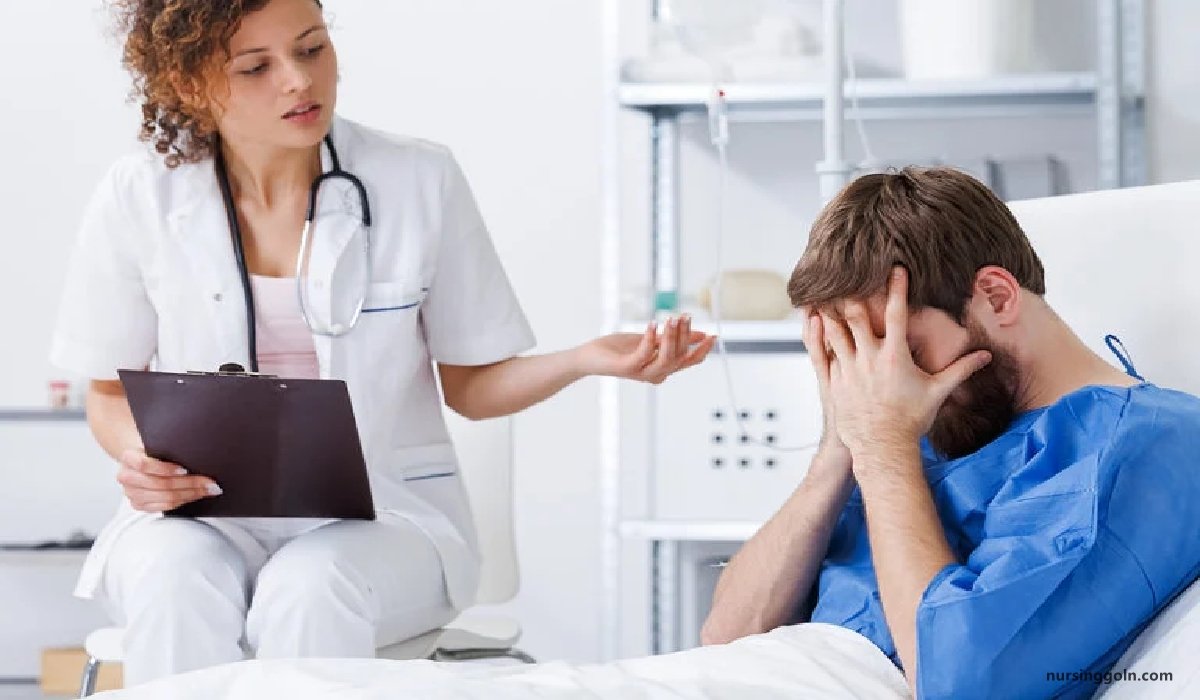Sleep disturbance and insomnia – This book covers the entire syllabus of “Psychiatric Nursing” prescribed by the Universities of Bangladesh- for Basic and diploma nursing students. We tried to accommodate the latest information and topics. This book is an examination-friendly setup according to the teachers’ lectures and examination questions.
At the end of the book previous university questions are given. We hope in touch with the book students’ knowledge will be upgraded and flourish. The unique way of presentation may make your reading of the book a pleasurable experience.

Sleep disturbance and insomnia
Types of sleep
Sleep:
Sleep can be regarded as a physiological, reversible reduction of conscious awareness.
Types:
There are two types of sleep:
1. REM sleep (Rapid eye movement sleep)
2. NREM sleep (Non-REM sleep).
[Ref: S Nambi/2/1391]
Characteristics of REM sleep:
1. Rapid eye movements
2. Dreaming
3. Increased brain metabolism
4. Oxygen utilization and temperature
5. A loss of muscle tone
6. Tachycardia
7. Arrhythmia, and
8. Penile erection.
[Ref: S Nambi/2/140]
Sleep deprivation:
Sleep deprivation is a pressing health problem. If a person is not sleeping continuously for few days or nights, it is harmful to his health.
Problems due to sleep deprivation:
1. Impaired mental alertness and performance.
2. Thinking process is disturbed.
3. Results in poor attention, concentration and judgment.
4. Mental fatigue may even trigger physical illness like heart attack’
5. May lead on to traffic accidents and industrial mishaps.
6. May lead to poor performance in studies and problems like drug abuse in students.
[Ref: S Nambi/2/1401]
Classification of sleep disorder:
Primary sleep disorders (Disordered sleep is the only sign and symptom of abnormality):
1. Cataplexy: Sudden decrease or loss of (sleep paralysis) muscle tone, often generalized and may lead on to sleep.
2. Hypersomnia: Excessive sleep at night or during the day.
3. Insomnia: Inability to fall asleep and maintain sleep. When occurs in the absence of physical or psychological disorders, it is primary insomnia.
4. Kleine-Levin syndrome: Periodic episodes of hypersomnia.
5. Narcolepsy: Uncontrollable, recurrent brief episodes of sleep associated with cataplexy.
6. Nightmares: Sleep disturbance with frightening or bad dreams. A good recall of dream occurs during REM sleep.
7. Night terrors: Sleep disturbance accompanied by panic, confusion and no recall of the frightening dream.
8. Pick Wickian: Occurs during stage 4 (NREM) sleep with hypersomnia associated with obesity and respiratory disturbance.
Secondary sleep disorders (Clinical problem accompanied by specific or non-specific disturbances):
1. Alcoholism-Variable sleep disturbance.
2. Anorexia nervosa-Decreased total sleep time.
3. Depression-Less sleep time, more awakenings.
4. Hyperthyroidism-Insomnia.
5. Hypothyroidism-Increased sleep.
6. Schizophrenia-Variable.
7. Parasomnias (Waking up during sleep)
➤ Bruxism (teeth grinding): Occurs during stage 2 (NREM) sleep with loud noise and damage to teeth.
➤ Enuresis: Bed wetting during sleep.
➤ Sleep talking: Mainly occurs during NREM sleep. Very common by itself or as a part of some other sleep disorder or psychiatric disorders.
➤ Sleepwalking: Occurs during stage 4 (NREM) sleep, in which, walking or other motor acts are performed.

Nursing care of sleep disorder:
1. Assess the client’s current sleep pattern and take a complete sleep history.
2. Identify both internal and external factors that are inhibiting the clients sleep.
3. Ascertain the client’s sleep-related routines and rituals. Encourage the client to use sleep- promoting methods.
4. Encourage the client to maintain a sleep diary or chart and to make a practice of using sleep strategies
5. Provide comfort measures such as backrubs, comfortable night clothes and prescribed pain medications.
[Ref: S Nambi/24/141-142]
Insomnia
Insomnia is defined as quantitatively or qualitatively insufficient sleep on the basis of the individual need. Insomnia is the term applied collectively to complaints involving the chronic inability to obtain adequate sleep. Insomnia is difficulty in falling asleep, difficulty in maintaining sleep or insufficient sleep.
[Ref: S Nambi/24/1421]
Classification of insomnia:
Insomnia is of three types.
1. Sleep onset insomnia-difficulty in falling asleep.
2. Frequent noctural awakening-interrupted sleep characterized by frequent awakening.
3. Early morning awakening-waking up early in the morning and not being able to fall back asleep.
[Ref: S Nambi/2/1421]

Causes of insomnia:
A. Primary-Due to specific sleep disorders.
B. Secondary-Due to –
1. Physical Causes
- Uneasiness, discomfort.
- Dyspnea
- Cough
- Itching
- Nocturia
2. Chronic pains:
- Headache
- Neuralgia
- Cramps
- Orthopedic disorder
- Cancer.
3. Endocrine disorders:
- Menopause
- Hyperthyroidism
- Hypoglycemia.
4. Behavioral Causes
- Naps (during the day)
- Irregular sleeping hours
- Lack of physical exercise
- Alcohol or tobacco abuse
- Excessive coffee in the evening
- Disturbing bed partner
- Disturbing environment (heat, cold, noise).
5. Psychiatric Disorders
- Depression
- Anxiety
- Hypomania
- Schizophrenia
- Chronic alcoholism and drug addiction.
6. Social Causes
- Separation or divorce
- Overwork, career change
- Traumatic experience (accident, assault)
- Immigration
- Serious illness in the family
- Birth in the family
- Death of spouse or close relative
- Financial loss
- Acquiring a physical handicap
- Son or daughter leaving home
- Retirement
- Failure (Exam, love).
7. Drug-Related Causes
- Stimulants
- Thyroid hormones
- Sympathomimetic
- Diuretics
- Corticosteroids
- Beta-blockers.
[Ref: S Nambi/21]
Treatment of insomnia:
1. Detailed assessment and evaluation
2. Identifying the causative factors and treating them.
3. Treatment of insomnia depends on duration.
4. Transient insomnia can be treated initially with hypnotics (like nitrazepam, lorazepam, etc.).
5. Hypnotics should not be given for longer-periods.
Non-Drug Treatment for Insomnia
1. Progressive relaxation: Relax the body (muscle), thereby relaxing the mind.
2. Autogenic training: Autosuggestion.
3. Meditation, yoga: Produces relaxation of the mind.
4. Biofeedback Self-monitoring, keeping record of sleep and walking.
5. Stimulus control therapy: Do not use the bed for reading or chatting. Go to bed for sleeping only.
[Ref: S Nambi/2/143-1441]

Nursing care of insomnia:
The common complaint a nurse receives during her night duty is disturbance in sleep. Hence, a nurse should understand in detail, the concept of sleep, the effects of sleep deprivation and various causes of insomnia. Apart from giving medication as prescribed by the doctors, the nurse should be in a position to educate the patient in getting good sleep.
Sleep hygiene
Nurse should advise her patients to avoid heavy meals or exercise before sleep. Coffee, tea or smoking should also be avoided before sleep. Try to minimize the use of hl4rnotics substitute back rubs, warm milk and relaxation exercises.
Sleep environment
Make the environment conducive to sleep. Too much light, noise and heat or cold are to be avoided. Close doors, dim lights, and turn of unnecessary machinery. Encourage staff to talk in low tones during the night in the wards. The nurse should keep a daily record of how many hours the patient has slept. If there is any sleep disturbance or sleep associated problem, inform the doctor.
[Ref: S Nambi/2/144]
PROBLEM BASED QUESTIONS
Provisional diagnosis: Mania.
Type of delusion: Grandiose delusion.
Treatment: see above.
Side effects of TCAs: see in Psychiatric Pharmacology chapter
Provisional diagnosis: Mania.
Treatment outline: Please see above
Two mood stabilizers:
- Heloperidol
- Chlorpromazine(opsonil, largectil)
Side effects of mood stabilizing drugs:
- Nausea, vomiting.
- Tremor.
- Ataxia.
DX: Depression
Drug therapy :Anti-depressant drugs:
1. Tricyclic anti-depressants (TCA)
- Amitryptyline 75-150 mg daily.
- Imipramine 75-150 mg daily.
2. Selective serotonin reuptake inhibitor-
- Fluoxetine 20 mg daily.
- Moclobemide 300-600 mg daily.
3 . Monoamine oxidase inhibitors:
- Phenelzine 45-90 mg daily.
4. Newer drug:
- Mirtazapine 15-45 mg daily.
- Reboxetine 8-12 mg daily.
Four side effects of antipsychotics: Please see Psychiatric Pharmacology chapter
Possible diagnosis: Depression.
Points in favour of diagnosis: See clinical feature of depression.
Treatment of depression: SEE Rx of depression.
Common side effects of antidepressants: See above
Outcome of depression:
- Risk of suicide (ten times greater than in the general population)
- Relapse of depression after treatment.
Read more:
